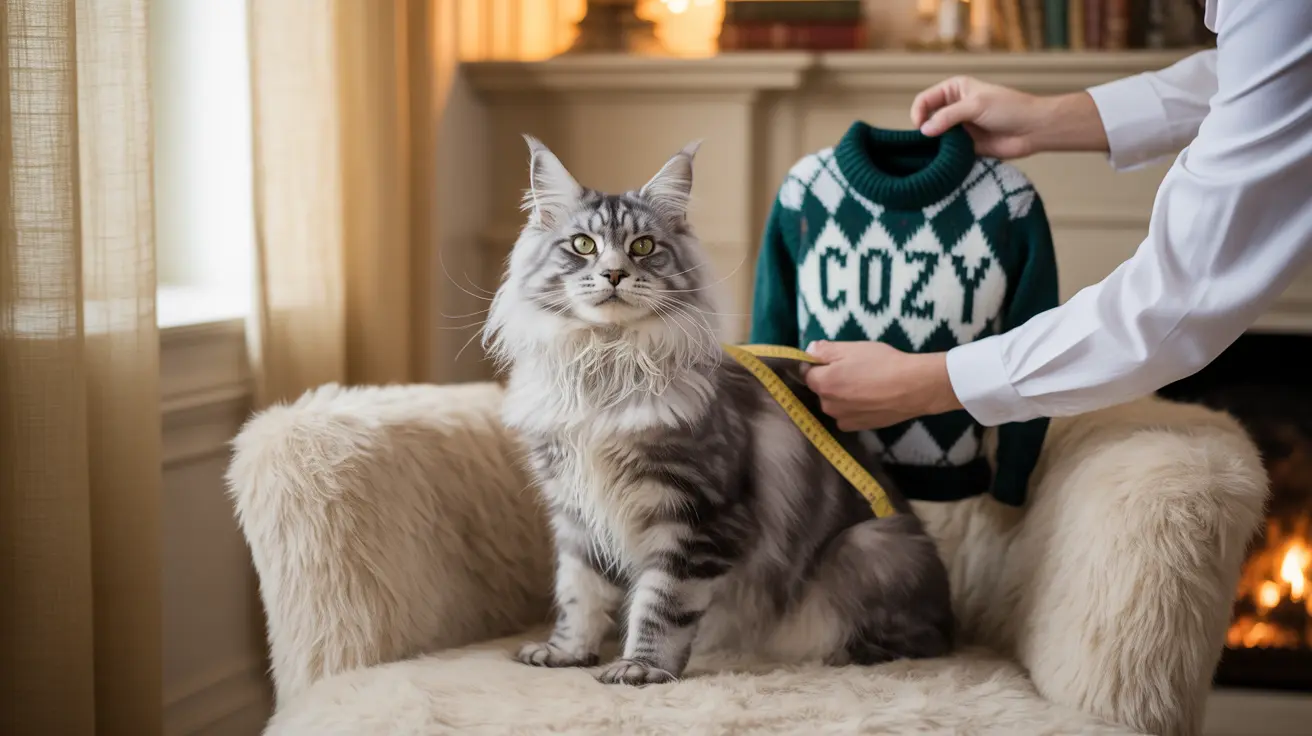Creating custom clothes for your feline friend can be both a rewarding craft project and a practical solution for cats who need extra warmth or protection. Whether you're an experienced seamstress or just getting started with DIY projects, making cat clothes at home is easier than you might think. This comprehensive guide will walk you through everything you need to know about crafting comfortable, safe, and stylish outfits for your cat.
Essential Materials for Making Cat Clothes
Before starting your DIY cat clothing project, gather these basic materials:
- Soft, breathable fabrics (cotton, fleece, or jersey)
- Measuring tape
- Scissors
- Sewing supplies (if making sewn garments)
- Old clothes for upcycling (baby onesies, socks, or t-shirts)
- Elastic (for comfort and fit)
- Safety pins for fitting
How to Measure Your Cat Correctly
Accurate measurements are crucial for creating comfortable cat clothes. Here's how to measure your cat properly:
- Neck circumference: Measure around the base of the neck
- Chest: Measure behind the front legs
- Length: Measure from neck to tail base
- Leg openings: Measure around each leg
Add half an inch to each measurement for comfort and movement.
Simple No-Sew Cat Clothing Options
Not everyone has access to a sewing machine or sewing skills. Here are some easy no-sew alternatives:
Transform a Baby Onesie
- Select a small onesie
- Cut appropriate holes for legs
- Create a tail opening
- Trim excess fabric as needed
Sock Sweater Method
- Choose a large sock
- Cut holes for legs
- Shape the neck opening
- Trim to proper length
Creating Professional-Looking Cat Clothes
For those comfortable with sewing, try these more advanced projects:
Custom Cat Sweater
- Create or purchase a pattern
- Cut fabric according to measurements
- Sew main seams
- Add elastic for comfort
- Finish edges professionally
Recovery Suit Alternative
Perfect for post-surgery protection or medical needs:
- Use stretchy fabric
- Include velcro closures
- Ensure easy bathroom access
- Make it adjustable for comfort
Safety Considerations and Best Practices
Keep these important safety tips in mind:
- Always supervise your cat while wearing clothes
- Choose breathable, non-toxic materials
- Avoid small decorative elements that could be chewed off
- Ensure the outfit allows full range of movement
- Watch for signs of distress or discomfort
Frequently Asked Questions
How do I measure my cat properly to make comfortable DIY cat clothes?
Use a soft measuring tape and measure your cat when they're calm. Take measurements of the neck, chest, length from neck to tail, and around the legs. Add a half-inch allowance for comfort.
What are the best materials and fabrics for making homemade cat clothes?
Cotton, fleece, and jersey knits are ideal as they're breathable, stretchy, and comfortable. Avoid synthetic materials that could cause overheating or skin irritation.
How can I make no-sew cat clothes using old socks or jumpers?
Cut appropriate holes for the legs and tail in a sock or sleeve from an old jumper. Ensure the material is stretchy enough to slip on easily while maintaining its shape.
What safety tips should I follow when dressing my cat in DIY clothing?
Always supervise your cat while wearing clothes, ensure the outfit isn't too tight, avoid small decorative elements, and watch for signs of distress or discomfort.
How can I turn a baby onesie or old sweater into a cozy cat outfit?
Cut appropriate holes for legs and tail in a baby onesie, or use the sleeve of an old sweater by cutting it to size and adding leg holes. Ensure all edges are finished to prevent fraying.
Creating cat clothes at home can be a fun and practical project that benefits both you and your feline friend. Remember to prioritize your cat's comfort and safety above style, and always monitor them while wearing any clothing. With practice and patience, you'll soon be crafting adorable, comfortable outfits for your beloved pet.






